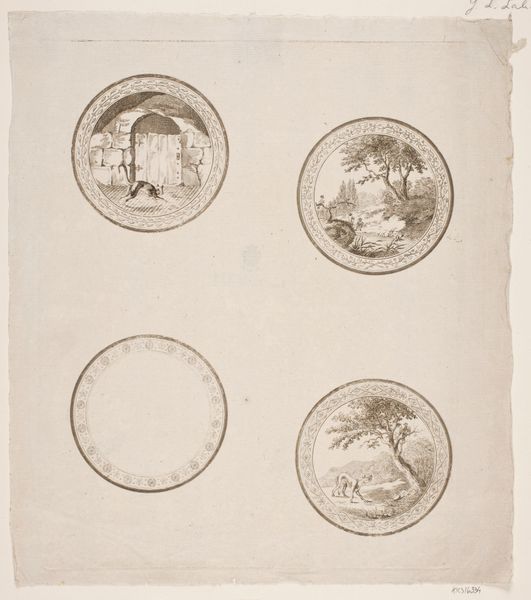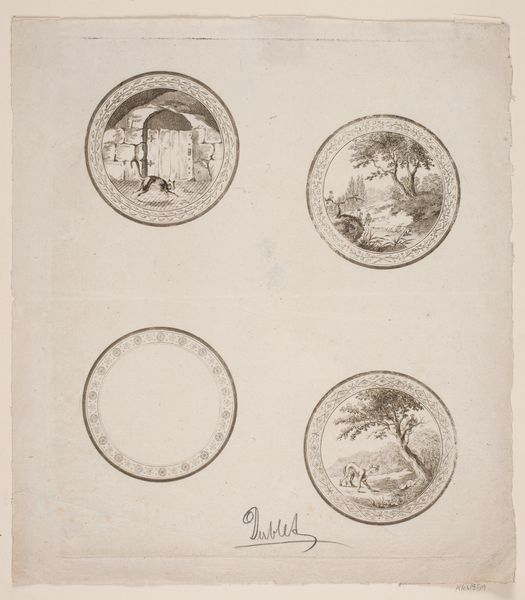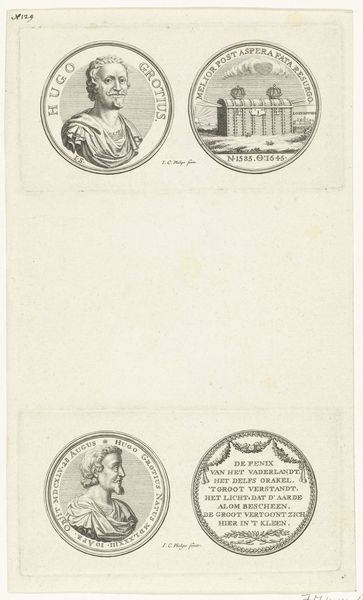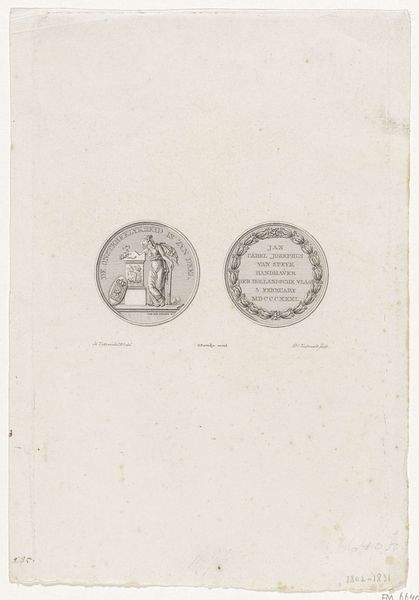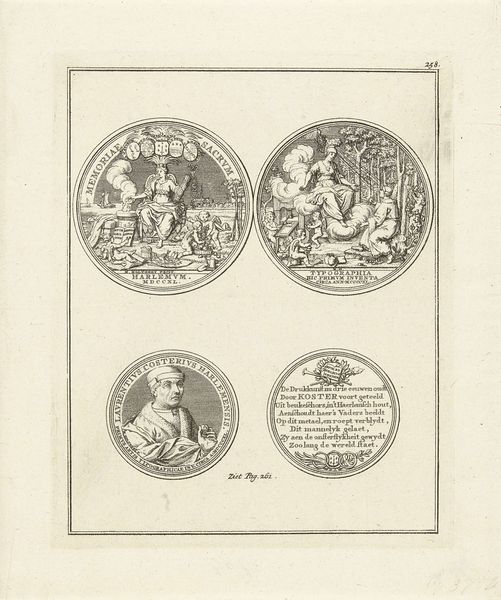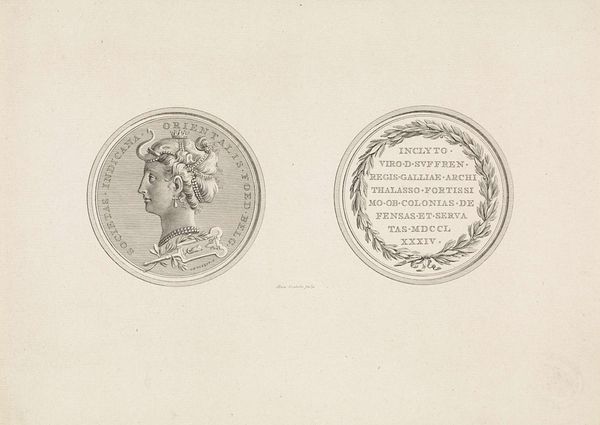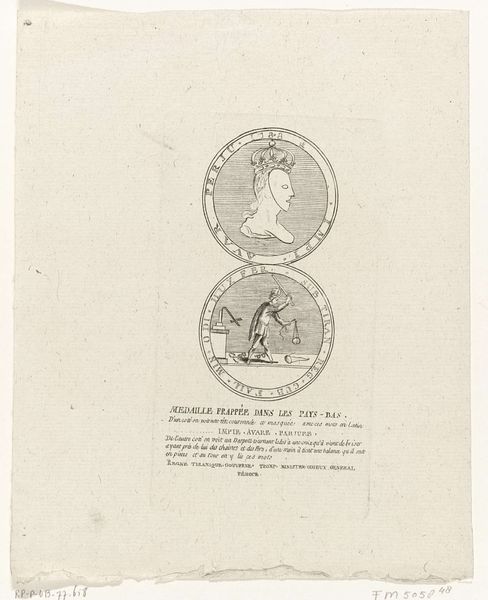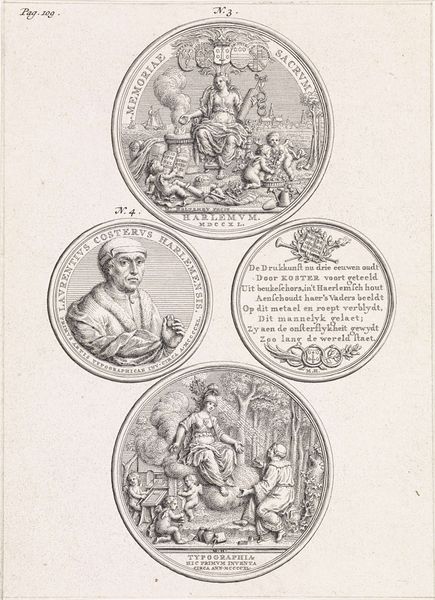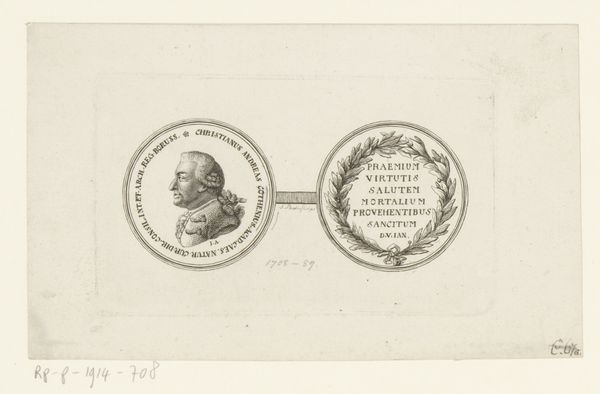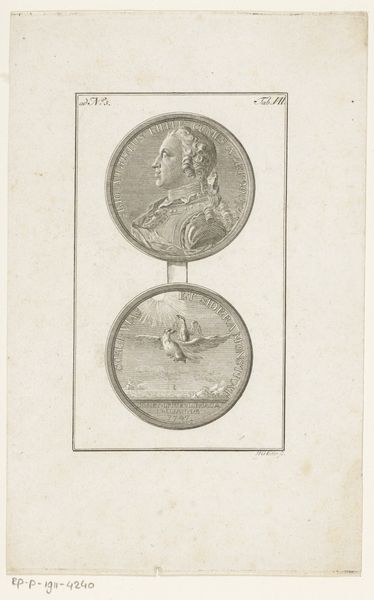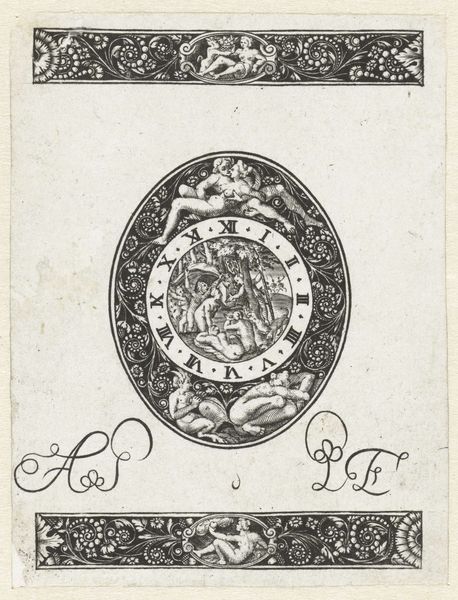
Gedenkpenning ter ere van het bezoek van Willem V en Wilhelmina van Pruisen te Amsterdam, 1768 1768
0:00
0:00
anonymous
Rijksmuseum
Dimensions: height 182 mm, width 125 mm
Copyright: Rijks Museum: Open Domain
Curator: Here we have "Gedenkpenning ter ere van het bezoek van Willem V en Wilhelmina van Pruisen te Amsterdam, 1768," a commemorative medal engraving dating back to 1768, found within the Rijksmuseum's collection. Editor: The image gives a somber impression, almost ghostly with its pale background. It's quite austere and detailed for a celebratory piece. You almost sense a distance between the subjects depicted. Curator: These prints often functioned as propaganda or historical records circulated amongst the public. Engraving, as a printmaking technique, allowed for multiples to be made efficiently. What do you think this tells us about accessibility? Editor: It strikes me as rather cold and formal for something made for general consumption. You would think for a coin they would imbue them with a greater sense of warmth or importance. Do you think they succeeded at portraying Willem V and his wife in a flattering light? Their expressions seem fixed. Curator: Their depiction reinforces the societal structures they represent, power and class, reproduced to be circulated and consumed by the very subjects under their rule. Think about the choice of engraving itself; its reproducibility aligns with the standardization of power, the dissemination of an image intended to reinforce authority. Editor: It’s interesting that while trying to broadcast status and authority the result almost comes off as unsettling, like ghostly effigies pressed into existence for those cold historical functions, as you point out. Looking closely at the engraving's lines I appreciate the engraver’s skill but can’t feel an actual connection with the person or the event that it hopes to celebrate. Curator: And that is the curious duality of these types of commemorative medals, an event captured through meticulous craft for purposes political, the materiality of the piece speaking to more than its intended message. Editor: Indeed. Thinking about the print as an artifact has given me pause about the layers of representation involved and made me rethink my initial perception. Thanks!
Comments
No comments
Be the first to comment and join the conversation on the ultimate creative platform.
